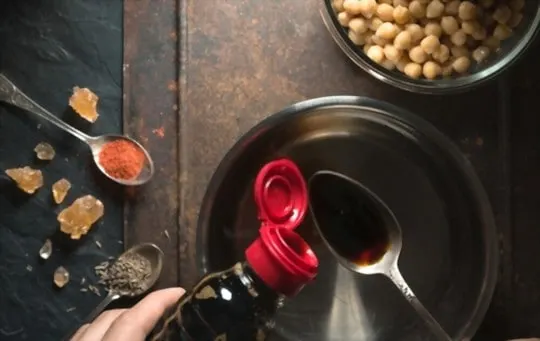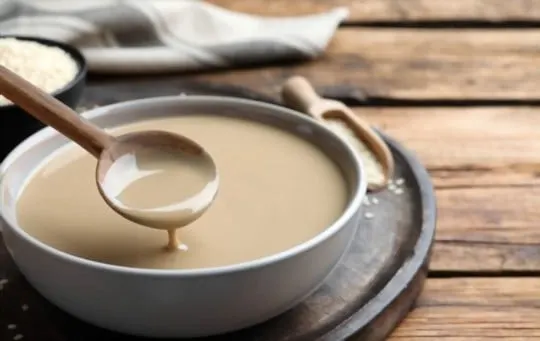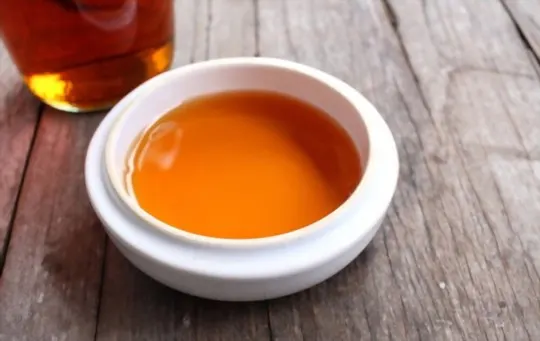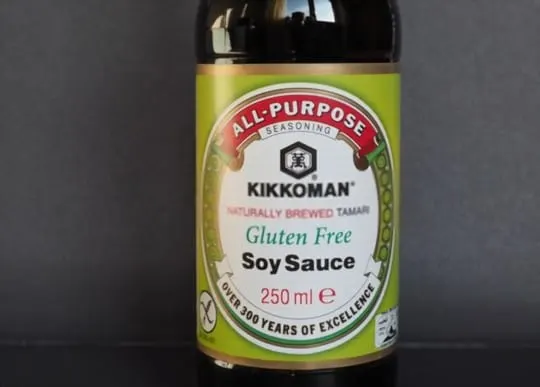Miso paste rocks our kitchen with its rich, savory kick.
Ever been mid-recipe and realized you’re out? Total mood killer, right?
No sweat, we’ve got the inside scoop on mixing things up without losing that umami bomb we all crave.
It’s like finding a new favorite song that fits right into your all-time playlist. Soy sauce? It’s a classic swap, hitting those salty, fermented notes.
Then there’s tahini, bringing a nutty twist we never knew we needed. Ever tried nutritional yeast?
Talk about a flavor glow-up. Grab these swaps, and watch your dishes keep their cool vibe, no miso required.
What is Miso Paste?

Miso paste is a fermented soybean paste that is commonly used in Japanese cuisine.
It has a salty, savory flavor and can be used in soups, stews, marinades, and sauces.
Miso paste combines soybeans with a koji starter culture and ferments the mixture for several months.
The final product is a thick, nutrient-rich paste packed with enzymes and beneficial bacteria.
Miso paste can be found in most Asian markets or online.
When shopping for miso paste, look for a variety labeled “sweet” or “mild,” as these will have a more mellow flavor.
Darker-colored pastes are typically saltier and have a more robust flavor.
Miso paste can be stored in the fridge for up to six months.
To use miso paste, add it to the desired dish according to taste.
For example, you might add a spoonful of miso paste to soup or stir-fry recipes.
Miso paste can also be used as a marinade for meats or vegetables.
When using miso paste in recipes, be sure to add it towards the end of cooking so that the beneficial enzymes are not destroyed by heat.
The 5 Best Substitutes for Miso Paste
If you don’t have any miso paste on hand, there are several suitable substitutes that will work in a pinch.
Here are the five best substitutes for miso paste:
1 – Soy Sauce

While soy sauce is most commonly associated with Asian cuisine, this versatile condiment can be used in various dishes.
Soy sauce is made by fermenting soybeans, wheat, and salt, and it has a salty, umami flavor that can enhance the taste of many foods.
One of the simplest ways to use soy sauce is as a dipping sauce for sushi or sashimi.
Just add a few drops to your plate and enjoy the flavor of your favorite raw fish dishes.
Soy sauce can also be used as a marinade for meat or vegetables.
Whisk together equal parts soy sauce, rice vinegar, and vegetable oil, and then let your food soak in the mixture for at least 30 minutes.
The result will be a dish that is packed with flavor.
Finally, soy sauce can be used as a finishing touch for soups or stir-fries.
Just add a splash of soy sauce before serving, and you’ll be amazed at how much it enhances the flavor of your dish.
2 – Tahini

If you’ve never tried tahini, you’re in for a treat.
This delicious paste made from ground sesame seeds is often used in Middle Eastern and Mediterranean cuisine.
Tahini can be used in various ways, including as a dip, spread, or ingredient in recipes.
It’s also a great source of healthy fats, protein, and minerals like calcium and iron.
One of the most popular ways to enjoy tahini is as a dip for vegetables or pita bread.
It’s also commonly used as a spread in sandwiches and wraps.
Mix it with lemon juice and garlic to create a flavorful dressing or dipping sauce for an easy and delicious way to enjoy tahini.
Tahini can also be added to soups and stews for extra creaminess and flavor.
And if you’re feeling adventurous, try using it in sweet recipes like cookies, cakes, or frostings.
No matter how you enjoy it, tahini is a delicious and versatile ingredient you’ll surely love.
3 – Fish Sauce

Fish sauce is a staple of Thai cuisine, and it’s not hard to see why.
This savory, salty sauce adds depth of flavor to any dish, and a little goes a long way.
Whether stir-frying vegetables or making a curry, fish sauce can help to enhance the flavor of your food.
And it’s not just for Thai food -fish sauce can be used in all Asian dishes.
Here are a few tips if you’re unsure how to use fish sauce.
Fish sauce is typically added at the end of cooking to not overwhelm the other flavors.
Start with a small amount and add more to taste.
Fish sauce pairs well with acidic ingredients like lime juice or vinegar, so try adding a splash of either to brighten up your dish.
When cooking with fish sauce, be sure to add other seasonings like salt and pepper to balance out the flavors.
With these tips in mind, go ahead and experiment with fish sauce in your cooking.
You’ll be surprised at how versatile this humble ingredient can be.
4 – Soybean Paste

Soybean paste is a versatile ingredient that can be used in a variety of dishes.
For example, it can be used as a marinade for chicken or beef or added to soups and stews for flavor.
It can also be used as a dipping sauce or spread on sandwiches.
Soybean paste is made from fermented soybeans and has a salty, umami flavor.
It is available in both red and white varieties.
While red soybean paste is more commonly used in Korean cuisine, white soybean paste can be used interchangeably.
When shopping for soybean paste, look for brands that do not contain preservatives or artificial flavors.
Be sure to refrigerate soybean paste after opening and use it within six months for best results.
5 – Tamari

Tamari is a type of soy sauce that originated in Japan.
It is made with soybeans, water, and salt and has a thick, dark, and umami-rich flavor.
Tamari can be used in many ways, but it is particularly well-suited for marinades, stir-fries, and dipping sauces.
To use tamari in a marinade:
- Combine it with other ingredients like ginger, garlic, honey, and sesame oil.
- Add tamari towards the end of cooking for stir-fries to prevent the dish from becoming too salty.
- Use tamari as a dipping sauce for sushi or dumplings.
With its versatile flavor and easy-to-use format, tamari is a great addition to any kitchen pantry.
Conclusion
In conclusion, there are a few great substitutes for miso paste that can be used in a pinch.
These substitutes include tamari, soy sauce, fish sauce, tahini, and soybean paste.
Each of these substitutes will add a different flavor to your dish, so be sure to choose the one that best fits your needs.
If you’re looking for a substitute similar in taste and texture to miso paste, tamari sauce is your best bet.
If you’re looking for a less salty substitute, then soy sauce or fish sauce would be a better option.
And finally, if you’re looking for a gluten-free substitute, tahini or soybean paste would be your best bet.

The 5 Best Substitutes for Miso Paste
Ingredients
- Soy Sauce
- Tahini
- Fish Sauce
- Soybean Paste
- Tamari
Instructions
- Pick your favorite substitute from the list above.
- Follow cooking directions for your selected substitute with the proper ratio of ingredients.

Andrew Gray is a seasoned food writer and blogger with a wealth of experience in the restaurant and catering industries. With a passion for all things delicious, Andrew has honed his culinary expertise through his work as a personal chef and caterer.
His love for food led him to venture into food writing, where he has contributed to various online publications, sharing his knowledge and insights on the culinary world. As the proud owner of AmericasRestaurant.com, Andrew covers a wide range of topics, including recipes, restaurant reviews, product recommendations, and culinary tips.
Through his website, he aims to inspire and educate fellow food enthusiasts, offering a comprehensive resource for all things food-related.

Leave a comment